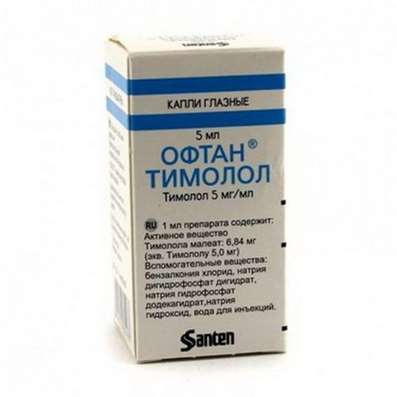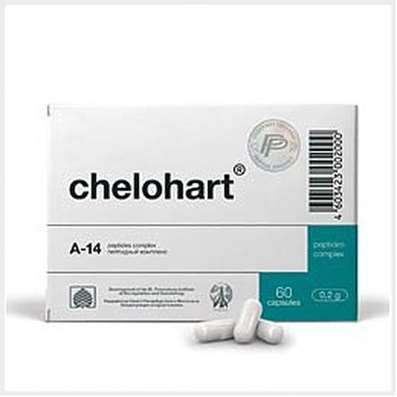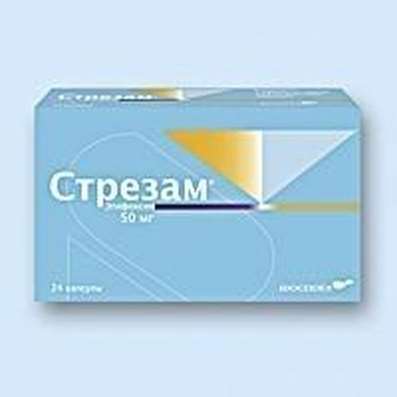Instruction for use: Hemohes 6%
I want this, give me price
Dosage form: Solution for infusions
Active substance: Amylum hydroxyaethylicum
ATX
B05AA07 Hydroxyethyl starch
Pharmacological group
Substitutes for plasma and other blood components
The nosological classification (ICD-10)
A48.3 Toxic shock syndrome: Bacteremic shock; Infectious-toxic shock; Intoxication syndrome; Toxico-infectious shock; Toxic shock; Chronic intoxication in diseases of the digestive tract; Chronic intoxication in gastrointestinal infections; Endotoxin shock
B99.9 Other and unspecified infectious diseases
E86 Decreased fluid volume [hypovolaemia]: Water deficit recovery; Indemnification of isotonic deficiency of water; Compensation for isotonic sodium deficiency; Compensation BCC; Replenishment of water deficit with stored KShS; Replenishment of fluid volume; Replenishment of BCC; Replenishment of electrolytes with stored KHS; Hypovolemic conditions; Hypovolemic condition; Hypovolemia; Hypotonic form of hypohydration; Hypochloremia with dehydration; Dehydration of different origin; Dehydration in children; Substitution of plasma volume for blood loss in pediatrics; Substitution of plasma with its losses and burns; Isotonic dehydration; Isotonic form of hypohydration; Violation of the water-salt balance; Dehydration;Dehydration in acute intestinal infections; Acute hypovolemia; Loss of fluid in burns; Toxicosis with exsycosis
R57 Shock, not elsewhere classified: Obstructive shock
R57.1 Hypovolemic shock: Hypovolemic shock during surgery; Acute hypovolemia
R57.8.0 * Burn shock: Pain shock for burns; Burn shock
R57.9 Shock, unspecified: Pain shock; Hemolytic shock; Neurogenic shock; Shock; Shock condition; Shock states
R58 Bleeding, not elsewhere classified: Abdominal apoplexy; Hemorrhagia; Haemorrhage of the esophagus; Hemorrhage; Generalized bleeding; Diffuse bleeding; Diffuse bleeding; Prolonged bleeding; Blood loss; Blood loss during surgical interventions; Bleeding during surgery and in the postoperative period; Bleeding during labor; Bleeding and haemorrhage in hemophilia B; Bleeding from the gums; Bleeding intraoperative abdominal; Bleeding against a background of coumarin anticoagulants; Hepatic hepatitis; Bleeding in hemophilia A; Bleeding at hemophilia A; Bleeding with inhibitory forms of hemophilia A and B; Bleeding due to leukemia; Bleeding in patients with leukemia; Bleeding; Bleeding due to portal hypertension; Bleeding due to hyperfibrinolysis; Drug bleeding; Local bleeding; Local bleeding due to activation of fibrinolysis; Massive blood loss; Acute blood loss; Parenchymal hemorrhage; Hepatic bleeding; Postoperative hemorrhage; Kidney bleeding; Vascular-platelet hemostasis; Traumatic bleeding; Threatening bleeding; Chronic blood loss
T14 Injury to unspecified site: Pain syndrome with trauma and after surgery; Injuries; Extensive trauma to the skin and soft tissues; Muscle and ligament injuries; Injuries; Fibroma traumatic; Acute sport injuries
T30 Thermal and chemical burns of unspecified site: Pain syndrome with burns; Pain in burns; Pain with burns; Sluggishly healing post-burn wounds; Deep burns with a wet scab; Deep burns with abundant compartments; Deep burn; Laser burn; Burn; Burn of rectum and perineum; Burn with mild exudation; Burn disease; Burn injury; Superficial burn; Superficial burn of I and II degree; Superficial skin burns; After-burn trophic ulcer and wound; Post-burn complication; Loss of fluid in burns; Sepsis burn; Thermal burns; Thermal skin lesions; Thermal burn; Trophic after-burn ulcers; Chemical burn; Surgical burn
T79.4 Traumatic shock: Haemorrhagic shock; Crash Syndrome; Posthemorrhagic shock; Postoperative shock; Post-traumatic shock; Post-traumatic shock; Traumatic shock; Syndrome of hemorrhagic shock and encephalopathy
T81.1 Shock during or after the procedure, not elsewhere classified: Operating shock; Postoperative shock; Operational shock
Z100 * CLASS XXII Surgical practice: Abdominal surgery; adenomectomy; Amputation; Coronary angioplasty; Angioplasty of the carotid arteries; Antiseptic skin treatment for wounds; Antiseptic Hand; Appendectomy; atherectomy; Balloon coronary angioplasty; Vaginal hysterectomy; The coronary bypass; Interventions in the vagina and cervix; Interventions on the bladder; Intervention in the mouth; Restoration and reconstructive surgery; Hand hygiene of medical personnel; Gynecologic surgery; Gynecological intervention; Gynecological surgery; Hypovolemic shock during operations; Disinfection of purulent wounds; Disinfection of wounds edges; Diagnostic intervention; Diagnostic procedures; Cervical Diathermocoagulation; Long-surgery; Replacing the fistula catheters; Infection in orthopedic surgery; Artificial heart valve; cystectomy; Short-term outpatient surgery; Short-term operation; Short surgical procedures; Krikotireotomiya; Blood loss during surgery; Bleeding during surgery and in the postoperative period; Kuldotsentez; laser photocoagulation; laser coagulation; retinal laser coagulation; Laparoscopy; Laparoscopy in Gynecology; CSF fistula; Small gynecological operations; Small surgical procedures; Mastectomy and subsequent plastic; mediastinotomy; Microsurgical operations on the ear; Mukogingivalnye operation; suturing; Minor surgery; neurosurgical operation; Immobilization of the eyeball in ophthalmic surgery; testectomy; pancreatectomy; Perikardektomiya; The period of rehabilitation after surgery; The period of convalescence after surgery; Percutaneous transluminal coronary angioplasty; Pleural thoracentesis; Pneumonia postoperative and posttraumatic; Preparation for surgical procedures; Preparation for surgery; Preparation of the surgeon's hands before surgery; Preparation of the colon for surgical procedures; Postoperative aspiration pneumonia in neurosurgical and thoracic surgery; Postoperative nausea; Postoperative bleeding; postoperative granuloma; postoperative shock; The early postoperative period; myocardial revascularization; Radiectomy; gastric Resection; bowel resection; uterine Resection; liver Resection; enterectomy; Resection of part of the stomach; Reocclusion of the operated vessel; Bonding tissues during surgical procedures; Removal of sutures; Condition after eye surgery; Condition after surgery; Condition after surgery in the nasal cavity; Condition after gastrectomy; Status after resection of the small intestine; Condition after tonsillectomy; Condition after removal of the duodenum; Condition after phlebectomy; Vascular surgery; Splenectomy; Sterilization of surgical instruments; Sterilization of surgical instruments; sternotomy; Dental surgery; Dental intervention in periodontal tissues; strumectomy; Tonsillectomy; Thoracic surgery; Thoracic surgery; total gastrectomy; Transdermal intravascular coronary angioplasty; Transurethral resection; Turbinektomiya; Removal of a tooth; cataract surgery; Removal of cysts; tonsillectomy; Removal of fibroids; Removing the mobile primary teeth; Removing polyps; Removing broken tooth; Removal of the uterus body; Removal of sutures; Fistula likvoroprovodyaschih ways; Frontoetmoidogaymorotomiya; Surgical infection; Surgical treatment of chronic limb ulcers; Surgery; The surgery in the anal area; The surgery on the colon; Surgical practice; The surgical procedure; Surgical interventions; Surgery on the gastrointestinal tract; Surgical procedures on the urinary tract; Surgical procedures on the urinary system; Surgical intervention of the genitourinary system; Surgical procedures on the heart; Surgical manipulation; surgery; Surgery on the veins; Surgical intervention; Vascular surgery; Surgical treatment of thrombosis; Surgery; cholecystectomy; Partial gastric resection; hysterectomy; Percutaneous transluminal coronary angioplasty; Percutaneous transluminal angioplasty; Coronary artery bypass; tooth Extirpation; Extirpation of milk teeth; pulpectomy; pulsative cardiopulmonary bypass; tooth Extraction; teeth Extraction; cataract extraction; Electrocoagulation; endourological intervention; episiotomy; Etmoidotomiya; Complications after tooth extraction
Composition and release form
1000 ml of solution for infusion contains poly (O-2-hydroxyethyl) starch (with a molecular weight of 200,000) 60 or 100 g and sodium chloride 9 g (sodium ions 154 mmol / l, chlorine ions 154 mmol / l, pH 4 -7; Theoretical osmolarity 310 mOsm / l); In polyethylene bottles of 500 ml, in a box of 10 pcs. (Hemohes 6%).
Pharmachologic effect
Mode of action - Plasma-substituting.
Normalizes or increases the circulating volume of plasma for 3-4 hours; Improves rheological properties of blood and microcirculation. 6% solution is isoncotic, and 10% is hyperoncotic.
Pharmacokinetics
Hydroxyethyl starch is partially accumulated for some time in the cells of the reticuloendothelial system. It is destroyed by serum amylase and is excreted almost completely through the kidneys.
Indications of the drug Hemohes 6%
Prevention and treatment of hypovolemia and shock (including preoperative and therapeutic hemodilution).
Contraindications
Hypersensitivity to starch, hyperhydration, hypervolemia, severe heart failure, renal failure accompanied by oliguria or anuria, severe bleeding disorders, neonatal period and childhood (under 12 years).
Pregnancy and breast-feeding
Only for life indications.
Side effects
Anaphylactic reactions of varying severity, rash, redness of face and neck; Rarely - a sharp increase in blood pressure, shock, stopping breathing and cardiac activity.
Dosing and Administration
IV by drop infusion. The total dosage, duration and rate of administration depend on the severity of hemorrhage and hypovolemia. It is necessary to remember the possibility of circulatory overload due to excess of the rate of administration or dose. For the timely detection of the development of anaphylactic / anaphylactoid reaction, the first 20-30 ml should be administered slowly and under the supervision of a doctor.
The maximum daily dose is 2 g of hydroxyethyl starch per 1 kg of body weight (which corresponds to 6% 33 ml / kg / day or 2500 ml / day for patients with a body weight of 75 kg for Hemohes and 10% for 20 ml / kg / day or 1500 for hemohesses. Ml / day, respectively).
The maximum rate of administration depends on the clinical situation. Patients with acute hemorrhagic shock drug can be injected at a rate of up to 20 ml / kg / h (equivalent to 0.33 ml / kg / min). In vital situations - 500 ml in the form of fast infusion (under pressure). When the drug is administered under pressure, all air must be removed from the vial prior to the injection, otherwise the risk of air embolism at the time of administration is possible.
It is necessary to control the water-electrolyte balance, especially in hypernatremia, dehydration and renal failure (control of serum creatinine). When blood clotting and chronic liver diseases are violated, coagulation parameters and serum albumin should be monitored. In connection with the possibility of the occurrence of allergic (anaphylactic / anaphylactoid) reactions, appropriate monitoring of patients is necessary.
Precautionary measures
It is used with caution in patients with suspected acute cerebrovascular insufficiency, with clotting disorders, cardiac, pulmonary and renal insufficiency, chronic liver diseases.
Special instructions
The level of a hematocrit of 25% or hemoglobin of 100 g / l in patients not suffering from cardiac or pulmonary insufficiency is the lower limit for the appointment of colloidal volumetric substitutes. It should be borne in mind that Hemohes does not reimburse proteins for plasma or blood loss.
Storage conditions of the drug Hemohes 6%
At a temperature not higher than 25 ° C.
Keep out of the reach of children.
The shelf life of the drug Hemohes 6%
3 years.
Do not use beyond the expiration date printed on the package.

 Cart
Cart





